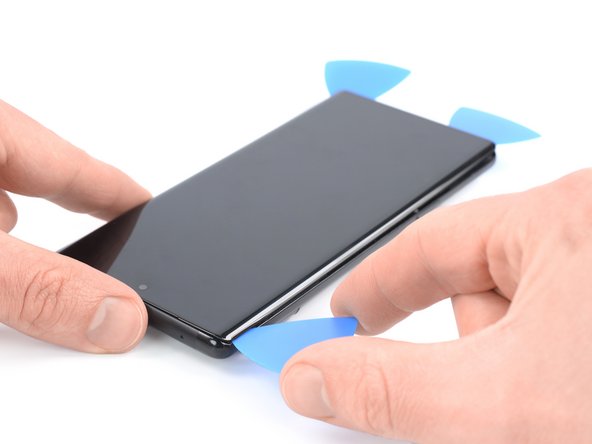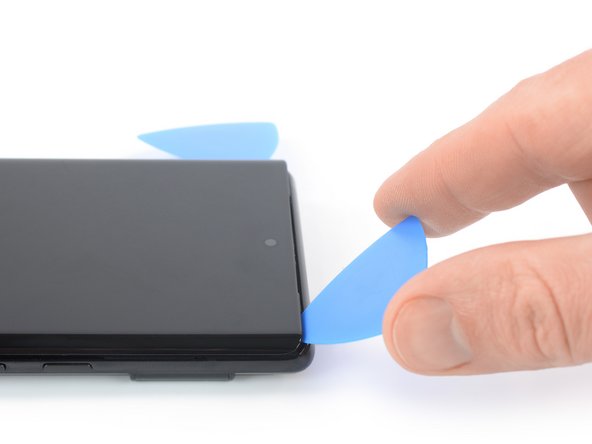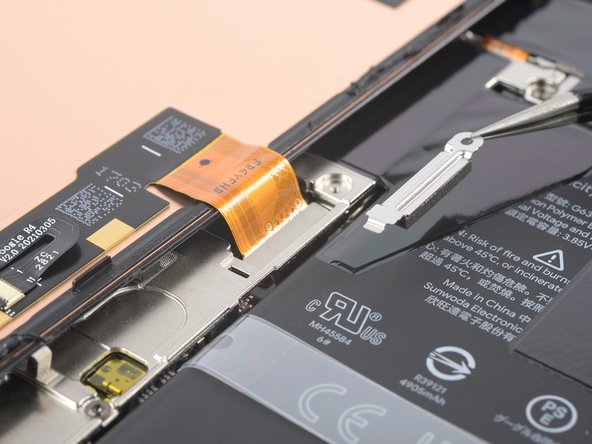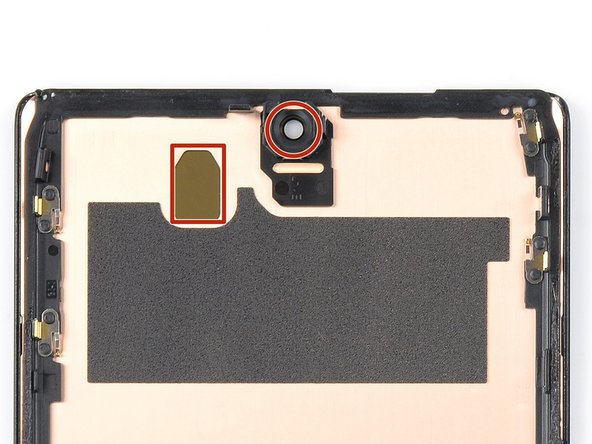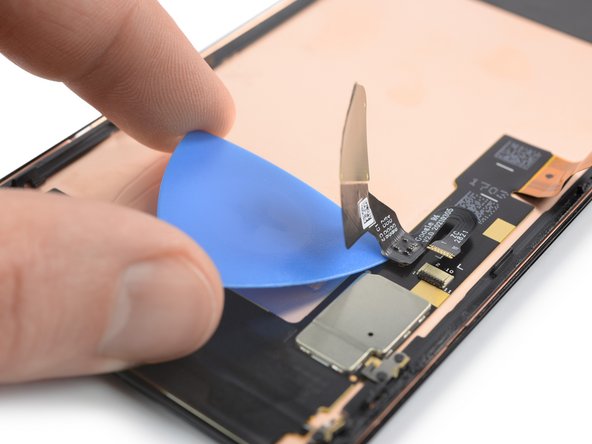Google Pixel 6 Pro Fingerprint Replacement: Step-by-Step Guide
Duration: 45 minutes
Steps: 20 Steps
Hey there, repair hero! This guide was put together by the awesome folks at Salvation Repair. It’s not officially endorsed by Google, but it’s packed with pro tips and tricks to get your device back in tip-top shape. Want to learn more about our repair guides? Check them out here: schedule a repair.
Heads up!
This fun and easy repair guide was created by the iFixit squad, but hey, it’s totally rad and totally not endorsed by Google, you know? Check out all our awesome guides right here at Salvation Repair. Give your Google Pixel 6 Pro a fresh fingerprint reader and have some awesome-sauce fun with this cool guide! Hey, be careful with that screen, don’t pulverize it! And hey, don’t forget, there’s lasers, not the explosive kind, just the kind used by secret agents! If you feel like you need some super handy help with this repair, come on over to Salvation Repair – we’re here to make your day!
Step 1
Before you start, make sure your battery is below 25% charged. We want to avoid any accidents, like a damaged battery catching fire. If you need help, you can always schedule a repair
– Alright, first things first! Let’s get your phone completely powered down and unplug any cables. It’s like giving it a little break before we start tinkering.
Step 2
In the next three steps, we’ll show you the nifty Anti-Clamp, a tool we’ve whipped up to make opening your device a breeze. If you don’t have an Anti-Clamp handy, no worries! Just skip three steps down for another method.
Got a cracked screen? No sweat! Just stick some clear packing tape over the crack to give that suction cup a better grip.
Want to master the Anti-Clamp? Check out our handy guide for all the pro tips!
Is your phone feeling a bit too slippery for the Anti-Clamp to grip? Grab some tape to make things a little stickier and get that job done!
– Give that blue handle a gentle pull back to set the Anti-Clamp’s arms free.
– Slide those arms over the left or right side of your phone, whichever feels right!
– Place the suction cups close to the bottom edge of your phone—one on the front and one on the back.
– Press the cups together to create some solid suction magic.
Step 3
– Pull the blue handle forward to lock the arms.
– Turn the handle clockwise 360 degrees or until the cups start to stretch.
– Make sure the suction cups stay aligned with each other. If they start to slip out of alignment, loosen them slightly and realign the arms.
Step 4
Take it easy, and don’t twist more than a half turn at a time! Give it a minute between turns and let the Anti-Clamp work its magic. You’ve got this!
For an extra boost, try using a hair dryer or heat gun – just be careful not to overheat, as this can damage your display or internal battery. Take your time and proceed with caution.
If the Anti-Clamp isn’t creating enough space, don’t worry! Just apply a bit more heat to the area and give the handle a gentle clockwise turn – about half a turn should do the trick. And remember, if you need help, you can always schedule a repair.
– Let’s get started! Heat up your iOpener and carefully thread it through the arms of the Anti-Clamp.
– Now, fold the iOpener so it’s snug against the bottom edge of your phone – this will help loosen things up.
– Be patient for just a minute – this will give the adhesive a chance to release, making it easier to create an opening gap.
– When the Anti-Clamp creates a big enough gap, it’s time to insert an opening pick under the screen frame.
– You can skip the next two steps – you’re making great progress!
Step 5
A hair dryer, heat gun, or hot plate will help get things warm, but don’t go overboard and melt anything. If you need help, you can always schedule a repair.
Step 6
Hey there, champ! Make sure you’re placing your opening pick in the sweet spot to keep the screen and its safety frame BFFs. You don’t wanna separate them from the phone, now do you? 😉 If you need help, you can always schedule a repair.
If your screen is cracked like a spiderweb, don’t worry! You can try covering it with clear packing tape to give the suction handle a better grip. If you’re feeling brave, try using super strong tape instead of the suction handle. If all else fails, you can always superglue the suction handle to the screen. Hey, it’s just a screen, right? But if you’re not comfortable with all that, you can always schedule a repair and let the pros handle it.
– Alright, time to get this screen nice and toasty! Warm up the screen until it’s comfortably warm to the touch. Then, grab a suction handle and stick it firmly to the bottom edge of the screen.
– Now, with that suction handle, gently lift the screen, including its safety frame. You’re looking to create a teensy tiny gap between the screen and the phone assembly.
– Once you’ve got that gap, slide an opening pick in there. Make sure it’s snug between the screen frame and the phone assembly.
– Now, we’re going to slice through that adhesive holding the screen in place. Glide that opening pick to the bottom left corner of the screen.
– Don’t let that adhesive sneak back together! Leave the opening pick right there to keep it separated. You’re doing great! If you need help, you can always schedule a repair.
Tools Used
Step 7
– Pop in a second opening pick at the bottom edge and glide it over to the bottom right corner of the screen to cut through that stubborn adhesive.
– Keep that opening pick snugly in place to stop the adhesive from trying to reseal itself.
Step 8
– Slide a third opening pick right under the bottom left corner of the screen, like a pro!
– Gently glide the opening pick along the left edge of the screen to cut through that pesky adhesive.
– Keep that opening pick snug in the top left corner so the adhesive doesn’t decide to reseal itself. You’ve got this!
The Google Pixel 6 Pro’s screen is held snugly in place by both adhesive and some clever little plastic pins. If your opening pick finds itself stuck during the screen removal dance, it’s a sign you’ve gone a tad too deep under the screen. Just remember to keep the tip of your opening pick only about 3-4 mm in there while you’re slicing through that display adhesive. Happy fixing!
Step 9
Hey there! To avoid any mishaps with the front-facing camera, make sure to only use the tip of your opening pick. This will help keep your tech looking good and ready to roll!
If that sticky stuff gets tough to cut, it’s probably just a little chilly. Give it a quick warm-up with your iOpener or heat gun for a minute or two. It’ll be back to its sticky self in no time!
Step 10
Hold your horses! You don’t want to yank off the display just yet; it’s still happily connected to the phone assembly.
– Now it’s time to bring in the fifth opening pick – slide it along the right edge of your phone to carefully cut through the remaining adhesive. If you need help, you can always schedule a repair
Step 12
You’re using Torx Plus screws? Don’t sweat it, standard Torx bits will do the trick! Just make sure you’re pressing down steady so you don’t strip anything. It’s like a gentle hug, but with more pressure. 😉
Keep an eye on those screws, my friend! They’re like the little puzzle pieces of your phone – put them back where they belong, or else you’ll have a real head-scratcher on your hands. 😜
– Grab your trusty Torx T3 screwdriver and give that 2.0 mm-long 3IP Torx Plus screw securing the display cable metal bracket a little twist. You got this!
Step 14
– Grab your trusty spudger and gently pry the connector of the display flex cable straight up from its socket. You’ve got this!
Tools Used
Step 15
Don’t forget to put that display cable bracket back in place. It’s like giving your phone a little hug!
– Hey there! You’re doing an awesome job on those device repairs. Let’s keep up, shall we? Take a good look at your screen, and remember the sayin’, ‘Out of sight isn’t out of mind.’ First, be a hero and take a gander at that screen – make sure that front-facing camera and sensor cutout are good to go! You’re almost there! This is the chance to put that phone through its paces. Turn it on and make sure everything’s workin’ smooth. Once the magic’s done, don’t forget to power off and say goodbye to your buddy for now. But don’t worry – we’ll be back around, maybe with a pre-cut adhesive card or a shiny fingerprint sensor! Need a hand along the way? No sweat! Just schedule a repair for some extra support!
Step 16
– Hey, if you’re swapping out the fingerprint reader on your Pixel 6 Pro, or moving it between screens, you’ll need to give it a quick calibration to keep things working smoothly.
– Use a pair of tweezers to gently pry open the ZIF connector on the back of the screen. Don’t worry, just a little wiggle and it’ll open right up.
Tools Used
Step 18
– Hey there! Warm up that iOpener and give the screen with the fingerprint reader some love to help loosen that adhesive. Keep that iOpener planted there for a solid 3 minutes. If you need any help, you know the drill – just schedule a repair!
Tools Used
Step 19
Watch out for that screen! It can get a bit too toasty, and trust us, it doesn’t appreciate the heat like you do. Keep it cool to avoid any pesky heat damage.
Take it easy now, gentle hands! This delicate display doesn’t like rough treatment. If the adhesive is acting up, just give your iOpener a quick reheat. It’ll be back to its happy, gooey self in a jiffy. If you need help, you can always schedule a repair
– Time to get that fingerprint reader out of there! Carefully slide your trusty opening pick underneath it to loosen its grip on the device.
– Now, gently use your opening pick to create some space between the fingerprint reader and the screen. You’re almost there!
Tools Used
Step 20
– Grab a pair of tweezers or use your fingers to gently lift out the fingerprint reader. Take it easy, and remember, you’re the boss here!
– Take a moment to compare your shiny new replacement part with the original. You might need to swap some bits over or peel off any sticky backings from the new piece before getting it installed. And don’t forget to clear away the old fingerprint reader adhesive before putting in the new one. You’ve got this!
Tools Used






















